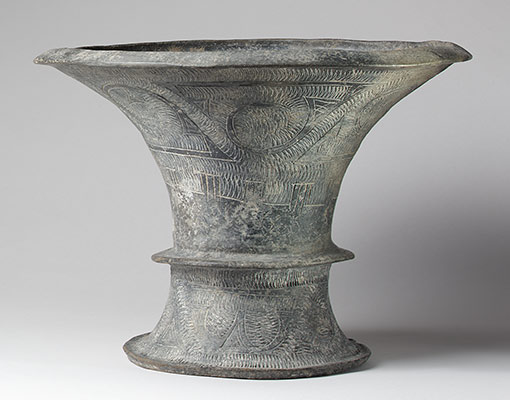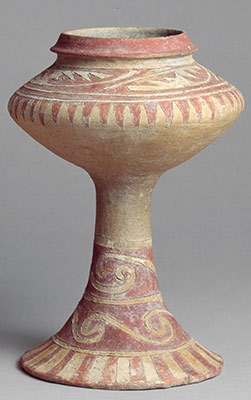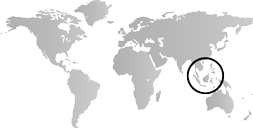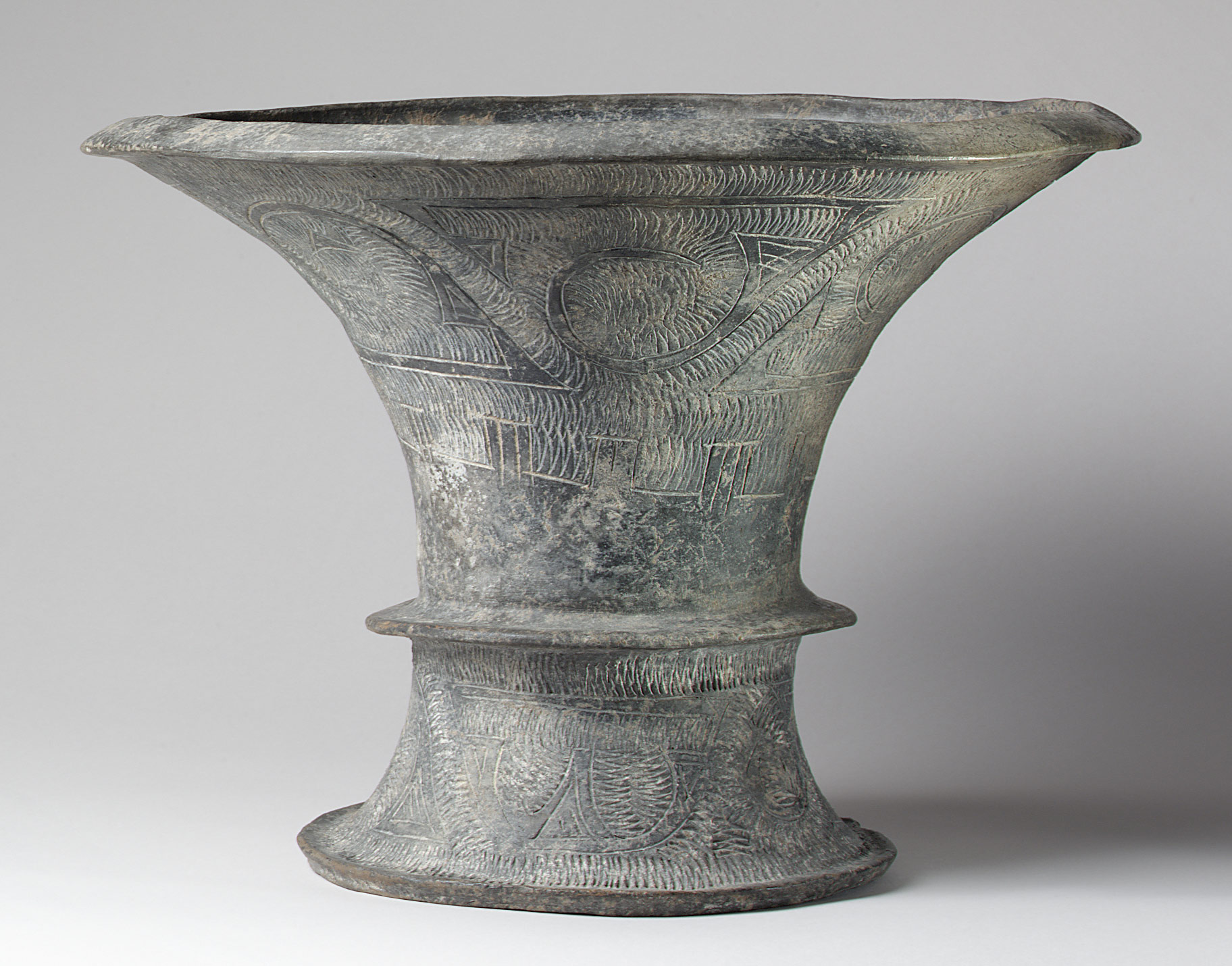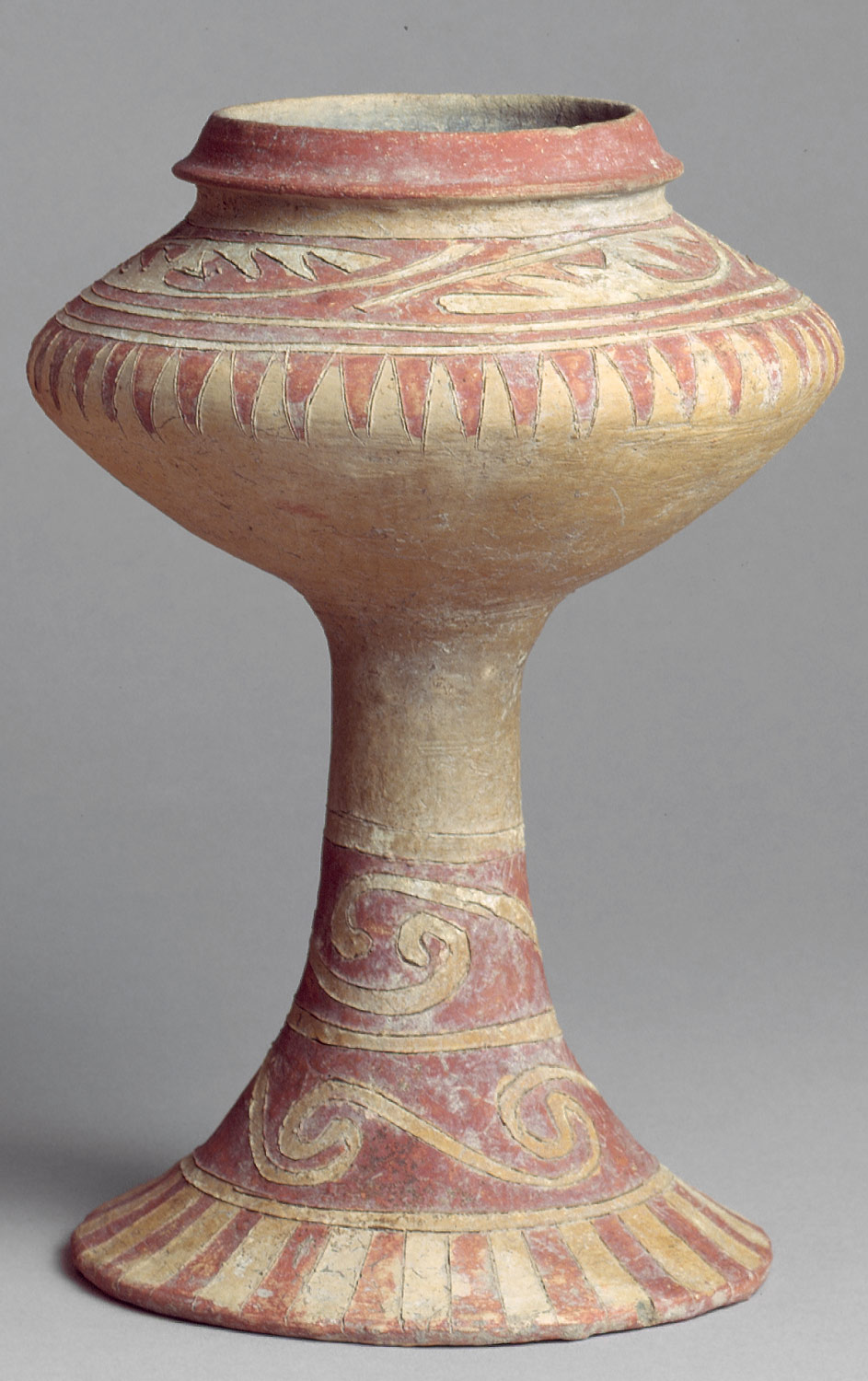Grave goods of Late Neolithic cultures include stone tools, shell beads and bracelets, and accomplished incised and cord-marked ceramics. Evidence of rice cultivation suggests that sedentary living is becoming more prevalent. By the middle of the period, bronze technology develops from locally mined ores, and cast implements and adornments made using both the lost-wax method and bivalve molds have been discovered in Thailand. Numerous rivers and waterways facilitate trade and exchange of goods among the cultures of mainland and island Southeast Asia.
Southeast Asia, 2000–1000 B.C.
Timeline
2000 B.C.
1750 B.C.
1750 B.C.
1500 B.C.
1500 B.C.
1250 B.C.
1250 B.C.
1000 B.C.
Overview
Key Events
-
ca. 2000 B.C.
The Phung Nguyen culture of the middle Red River valley, north of Hanoi, shows some evidence of rice cultivation. Clay spindle whorls and pottery with incised and comb-stamped decoration have been excavated at sites associated with this culture. The bronzework found in the later Dong Dau (ca. 1500 B.C.) and Go Mun (ca. 1000 B.C.) phases is thought to have provided a basis for the development of the subsequent Dongson culture (ca. 500 B.C.–300 A.D.).
-
ca. 2000–1400 B.C.
Khok Phanom Di, an extensive site—200 meters in diameter—on the Gulf of Thailand, yields an extraordinary range of grave goods, including shells, beads and bracelets, stone adzes, and fine pottery with black burnished surfaces and incised decoration. The richly appointed graves of the middle level include that of a woman with a string of 120,000 shell disk beads over her chest, and a large number of ceramics, tentatively identified as made by a potter of high social standing. The contemporaneous but poorly excavated site of Samrong Sen in Cambodia is thought to have been of comparable size and wealth.
-
ca. 2000–500 B.C.
The Ban Kao culture, named after a site in Kanchanaburi Province, flourishes on the long peninsula of southern Thailand and Malaysia. Grave goods from Ban Kao sites include untanged stone adzes, bone implements, shell beads and bracelets, and well-made cord-marked pottery, often with high pedestal or tripod supports.
-
ca. 1500–500 B.C.
Bronze technology spreads among numerous small, autonomous lowland communities. It is thought that ores were mined in the hills and traded in the form of ingots to the lowlands, where implements and adornments were cast.
-
ca. 1500 B.C.
The habitation mound and burial sites of Ban Nan Di in Thailand contain bronze implements made using both the lost-wax technique and bivalve molds. Mats are used to wrap figures in burials, with one child placed under a crocodile skin. Silk impressions corroded onto the surface of bronze items have been found at this site as well. It is not clear whether the textile was made locally or imported, most likely from China.
Citation
“Southeast Asia, 2000–1000 B.C.” In Heilbrunn Timeline of Art History. New York: The Metropolitan Museum of Art, 2000–. http://www.metmuseum.org/toah/ht/?period=03®ion=sse (October 2000)
